First up, I am selling two rifles. One is a Yugoslav M72 RPK (semiauto), which I am replacing with a Romanian RPK for Slidefire experimentation. Second is a gorgeous 1891 Argentine Mauser – too nice for me to keep in my collection; I’ll just wind up beating it up. If you’re interested in either one, scroll down to the bottom of the post for photos and details, and then send me an email.
Now, on to ideas.
I didn’t really get into this in my recent match video with the Slidefire RPK, but something I have gotten interested in is trying to become somewhat proficient in use of a light machine gun. As I suspect many combat vets understand, light machine guns can be used in ways that just aren’t feasible with semiauto rifles – machine-gun-specific tactics like grazing and plunging fire become available when you have full-auto and a bipod. A question that arises, though, is how to quantify these sorts of machine gun skills in a competitive setting.
With normal rifles, one can pretty well use speed and accuracy to score shooters. Here’s a target or set of targets; how fast can you hit it/them? But machine guns are often used to suppress an enemy rather than engage specific individual targets. Not that single targets are a bad thing to be good at hitting, but they leave a lot out of the equation.
So let’s say we were trying to set up some stages for a light machine gun match. What would be good courses of fire to use, and how would we judge them? How can we simulate things like covering fire and score different shooters’ efforts? I would be interested to hear thoughts anyone has on the subject!
On an unrelated note, I would like to make a quick shout out to International Military Antiques for being so kind as to send me a set of reproduction WWI German trench armor to shoot to pieces. I found what seems to be an original set of this sort of armor at RIA on a recent trip there, and it got me interested in just how effective the stuff was. Thanks to some of you guys, I have some excellent sources detailing the original testing done after WWI, but I wanted to conduct my own trial anyway. IMA has reproduction armor in stock ($225 for the set), and they thought that sort of testing would be cool to see as well.
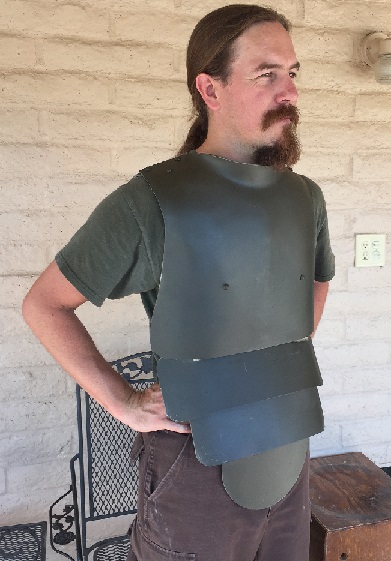
I am working on getting some hardness and composition testing of the reproduction armor done so we can have some context for the testing, and then Karl and I are going to shoot it up with a bunch of different guns from both short and long ranges.
Yugoslav M72 RPK
This is a parts kit I built on a NoDak receiver (an NDS-9; the proper receiver model for the M72). The barrel is original to the kit, and has a dark bore with strong rifling. It has a small bit of trench art in the form of a cross cut into the rubber buttplate. Includes all the relevant Yugo details, including a top cover with cutout for the M70 spring loaded retainer and a windage-adjustable rear sight. In my opinion, the M72 is the best variant of RPK – I really like it’s grip and stock. However, because it uses a non-standard rear trunnion I can’t fit a Slidefire to it. So I’m selling it to finance a Romanian RPK for my Slidefire experiments. Asking $875 shipped to the lower 48 states (no international sales; no sales to places where it is not legal to own). The drum is not included. Must ship to an 01 FFL (not C&R). Sold, pending funds.
1891 Argentine Mauser
I picked this up along with another rifle recently, and it is just way too gorgeous to be subjected to ownership by me. It’s all matching, has an outstanding bore, and original cleaning rod. Judging by the depth and crispness of the serial number in the stock, the wood has not been refinished. Chambered for 7.65mm Mauser. The only non-standard feature is the front sight blade, which has been replaced by a taller one to allow easy shooting at 100m (the original blade would have been zeroed for 300m minimum). It does have a small crack in the wrist behind the action – I’ve included a photo of this below. In addition, this is a Loewe-manufactured example, meaning it’s a pre-1898 antique and can ship directly to you without need of an FFL. I’m asking $500 shipped in the lower 48 (no international sales). Sold, pending funds.






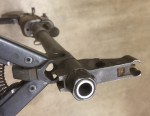




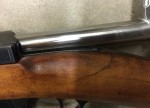
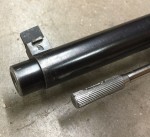


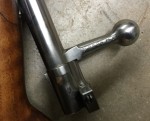
For once, I see one of these guns for sale postings before half of them are sold, and I can’t justify either one! That 1891 Argentine is very pretty, though…
Good targets for MGs has been an issue to me as a MG club officer at my local gun club for a long time. One needs to find a target where the advantages of Full Auto fire may be shown. To often you can use semi auto fire and that will prove superior. However real life has shown that MGs are the way to go. This is because the role of suppressive fire just can’t be replicated.
I see three main roles where MGs rise to the top. In roles of suppression and when there are multiple targets in depth and finally when lead must get down range faster. I have not figure out how to translate suppressive fire into a range situation without playing paintball and having someone shoot back. Then you understand! Multiple targets in depth, meaning that if you miss the lead guy, you will likely hit someone behind him. This is the WWI and Jap banzai charge idea. I have found two targets that get into this area. First a double tree target, where the first target covers the second. http://www.salutetargets.com/dueling-tree-steel-targets.html#!/Double-Tap-Dueling-Tree-12-paddle/p/43720886/category=9323724 With some many targets in the area, FA fire will hit multiple targets per burst. This also gets into the final area of time. Because you are shooting against someone else, you can’t just sit and pick off one at a time or you lose! We actually just bought this target and are trying it now. We have shot it at 50 yards and that was hard. We may need to drop to 25 yards. Of course this is only really good for SMGs at this range. We might, might try it for rifle caliber at 100 yards some day.
The one other target I found that was useful in this area is in this video. You have to watch at the end to really see the target. https://www.youtube.com/watch?v=p1huhcS2YZc As you can see, you must place sustained fire on the target to “win”.
Of course you have the balloons set up in row after row or the popper targets, set up many deep. However those did not work well for our range. I am guessing your application may be better for these targets.
Our club is constantly looking for good targets for Full Auto fire! We would love some more ideas!
As the owner of 3 German WWI Maxims, I am very interested to see the results of your testing on the armor! Maybe you could find someone to heat treat it to the correct hardness but I guess thats unlikely. My guess is that IMA steel is rather lower grade and your rifle rounds will cut it like butter. I have some IMA Maxim armor and I have been very tempted to shoot it. I am looking forward to see how yours does. I hope you mainly use Brit, French and Russian WWI rounds.
I was saw a documentary explaining the basics of enfilading fire using balloons fired upon from different angles. Something similar could be done with grouped steel targets fired upon at different angles. The “density” of the targets/”troop formations” could differ depending on the angle of fire (location of the shooting station).
Also, if wishing to emulate effective cover fire, one could fire at something indicating a desired field of fire (i.e. a large grid at distance X). One must hit each section of the grid X number of times in order to proceed. Not sure how to replicate giving a maneuvering force more time to flank, but I suppose it COULD be incorporated somehow with some creativity.
pretty sure it was a BBC or British discovery show. Showing the effectiveness of early German machine gun tactics. I think (not sure) they used a vickers for the demonstration. (and a couple of hundred balloons.)
A quick search on the web showed me mostly party baloons shaped like a gun 🙂
A Discovery or BBC show sounds right. The show I’m thinking of involved large pink balloons strung up at torso/head height. My Google-Fu is struggling and I cannot find it online.
When you shoot the WWI steel, you should use the correct WWI bullet types as well.
Ian, I have three Chilean Modelo 1895 Mausers made by Loewe, so not in the market for more.
For ideas, if we can’t find or afford a Dardick pistol or the trounds it fires, why in the world of 3D printers don’t we MAKE them?
Bit off topic, but while we’re on the subject of the Dardick pistol, I’ve always thought it would be a pretty good design for caseless ammunition, it’s relatively simple mechanically (especially compared to a G11, but seems to provide a solution to most of the concerns with caseless ammo (rotating chameber gives a chance to protect from cook offs, protects ammo, etc). Only issue of course making the ammo it’s self reliable.
The nice thing about the Dardick “tround” was that you could put anything in it. For instance, at least some trounds for the .38 caliber pistol were made to take .38 Special or 9 x 19mm standard cartridges, rather like a .22 LR “Shell Shrinker” in something like a .22-250.
It also could be made combustible, and even with a consumable primer. Thereby getting around some of the more irritating problems with caseless ammunition, like the H&K G11 was afflicted with.
A Dardick-type CPCTA (Combustible Plastic Cased Telescoped Ammunition) cartridge, combined with a Dardick-type “rotor” breech, could be a very interesting system for Very High Rate of Fire (VHRF) single-barrel weapons for applications such as forward area (mobile) air defense. Most obviously because the “open” rotor would avoid some of the heating problems of the “cylinder” of a typical revolver-breech type cannon, and the combustible case would eliminate the extraction/ejection part of the cycle except for duds. The main factor then would be barrel cooling. An externally-powered weapon along the lines of an electric-powered rotor breech gun would be the logical “home” for this type of breech system and cartridge combination.
A distinctly nasty possibility would be a liquid-propellant CPCTA, using a storable propellant similar to liquid rocket monopropellants like Hydrazine. These could generate muzzle velocities considerably higher than any propellant powder in use today, simply because the liquids have more K/cal per gram.
Higher MV equals shorter time of flight at reasonable ranges, which equals a better chance of hitting an airborne annoyance, especially a fast mover. Or a tactical missile, for that matter.
Yes, lasers are probably the coming thing, but keep in mind the cost factor. Generally, I’d expect the “semi-conventional” gun system to be cheaper to buy and have lower maintenance demands overall.
Which means more of them covering your FLOT for the same investment. I’m sure the infantry would approve.
cheers
eon
Eon —
the heat problem seems by measurement to be concentrated some distance forward of the chamber, even in closed-bolt weapons. So better breech cooling doesn’t help an overheating barrel. (The M60 barrel has a small airgap in the steel forward of the chamber, which isolates the hot barrel further from the chamber even though the gap is bridged by the Stellite liner. Fascinating feature on an otherwise-weak design).
RE the LMG thing: the Army and Air National Guard have comprehensive machine gun marksmanship matches that are published. I have shot all of them. The 10 meter match and the field fire are good starting points if you have the range capability. Let me know if you need more direction.
I can’t wait to see the armor tests – any chance of getting Soviet WW2 assault armor for a comparison?
To put it er… delicately, I’ve already spotted a flaw in the armor, it doesn’t extend down far enough… (that said may have been design with someone shorter in mind)
The older readers may remember the squad portion of the Camp Perry national matches, 1920’s and 1930’s, that included the BAR. Do the light MG test the same, excluding the individual riflemen.
Is that RPK even legal in NJ? xD I’d love to convince my dad to help buy this but something tells me the state will say no
Perhaps an idea for using the LMG would be to simply have larger targets (to allow for larger groups) and to use a timed shoot with the minimum number of hits large enough and the time short enough that a semi-auto rifle couldn’t compete effectively.
You could move between several positions which are successively at shorter ranges to simulate successive “bounds” forward in support of a section. Make all the shooting positions prone so the bipods can be used.
The above wouldn’t require too much change to the facilities, other than having larger targets. You might in fact simply line up several regular size cardboard targets close to the ground and edge to edge beside each other to simulate suppressive fire on a slit trench.
Suppressive fire is still firing *at* something, since if you’re not close to an actual target your rounds won’t suppress them. The “suppressive” part of it is simply that you’re not counting on actually hitting it. The larger targets would allow measuring whether you are “close enough” or whether you’re too far off for the fire to be effective.
Aye, that.
They need to bob up an down.
The February 1957 GUNS magazine has an interesting article on civilian machine gun and squad matches by Nils Kvale.
Not to be rude but where am I going to find a magazine from the year my father turned 5 yeas old? 🙂
Not to be rude, but when’s the last time you used Google? 🙂
http://www.gunsmagazine.com/1957issues/G0257.pdf
Damn, never thought I could find that with Google! Thanks!
Here’s the page where you can find all of them;
http://gunsmagazine.com/classic-guns-magazine-editions/
cheers
eon
Someone call the ambulance, ’cause there’s a burn victim to pick up. Ouch.
I’m glad someone got the Argie before I had to…!
Hopefully this will help. This is the in-depth (albeit, incredibly dry) standards for testing when firing belt-fed fun for the US Army. Do you have access to multiple silhouette targets that you can stagger down range?
http://www.globalsecurity.org/military/library/policy/army/fm/3-22-68/c04.htm
If you really want to go “whole-hog”, here’s the full manual;
http://armypubs.army.mil/doctrine/DR_pubs/dr_a/pdf/fm3_22x68.pdf
cheers
eon
Moving targets. Is that doable? I bet it would also give more than a few semi auto shooters fits.
One of the stages for LMG qualification should be demonstrating your ability to control the beaten zone. Perhaps a series of plate sized targets at 25 meters. Keeping the prescribed 6 round burst on the plate. This is a modification of the Marine Corps M60 qualification of keeping a burst on a 2 inch square from the tripod. Just a thought.
For test trench armor – recall that fragmentation of various sorts, ricochets, etc, were very important contributors to the WWI casulity rates.
So in addition to just shooting at it (as one would modern armor), trying to hit it with “fragments” or “ricochets” would be interesing too.
(May shoot at from close ranges with relatively low powered cartridges to emulate these effects?)
This is a great idea! Set up a metal target perendicular to the trench armor and splash bullet fragments from the metal plate onto the armor. Many of the body armor ideas in WWI were meant to do just this, prevent injury from indirect hits. An example of this is the mask developed for tank crews that were getting hit by fragments that made there way into the tank via eye slits.
I have an M1891 Argentine Mauser also, what kind of front sight blade is that it would be nice to have one on my rifle ?
Sorry, but I have no idea – it was on there when I got the rifle.
On machinegun matches; have you thought of using man- sized targets in either a single-file or spread/frontal formation? This is what we were taught in the L-formation ambushes where the riflemen were along the “foot” of the “shank” and me with the rifle-stocked LMG, BAR or selective fire M-14 firing down the line or across the front from the “foot” position. Just remember that any incapacitating wound is a “hit” but in a contest would receive a lesser score for a non-lethal placement in the full-auto category. Additionally, the targets could be spread out with firing positions representing a forward covered assault where each position engaged alternative targets or groups as the team member advanced under covering fire. On single targets the position could be scored on a “shots fired to neutralize” basis. On a team situation, the participants could operate as a fire and cover situation against several targets that were revealed only as the session team forward after taking out all of the engaged targets from that position. Missing a target or moving forward prior to neutralization of an element of that position could count as a “kill” of the expoased team member.
Not mine, but it’s up for sale:
http://downeasttrading.joesalter.com/detail.php?f_qryitem=20087
WWI German Armour Breastplate
Price: Canadian $845.00 Order
Click on thumbnails below to enlarge images
Maker: German Model: Militaria
An original WWI German sniper’s or machine gunner’s breastplate. These pieces were built towards the end of the 1st war. This is an original piece and not a current reproduction. This is the breastplate only. It shows the strap attachments for the lower skirts. The lower left corner of the interior shows a mark 55 trade symbol & S. The front shows an impact mark, cracks and 2 welded crack lines. Overall, this breastplate shows spots of pitting, rust staining and traces of the original paint. A good example of a less than common WWI artifact.
Bravo two zero, film… Battle scene, that has a decent Lmg use theroretical theatrical demonstration of the correct use. You have to replicate that, somehow.
Friend, if you run across any more ‘antique’ rifles in good condition, I’m interested. Remember me!